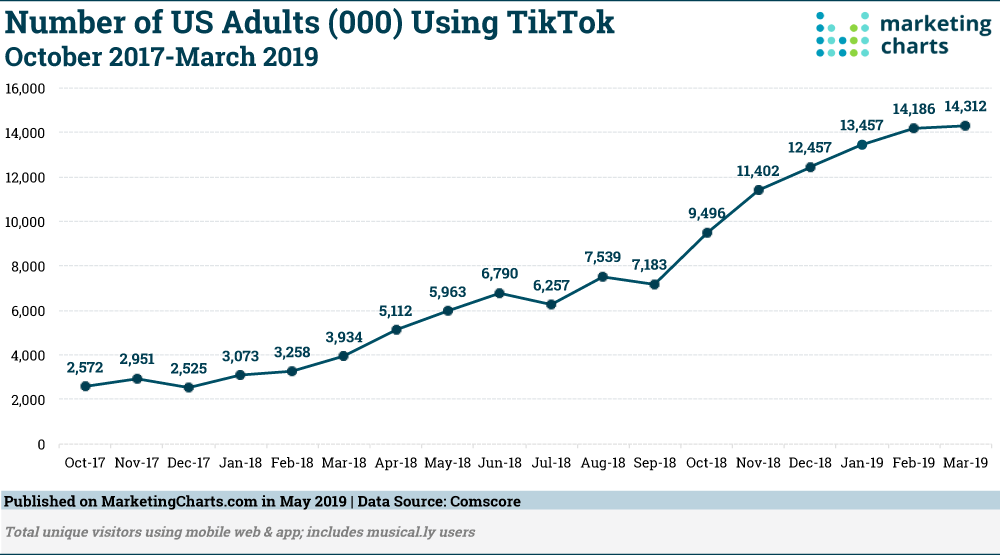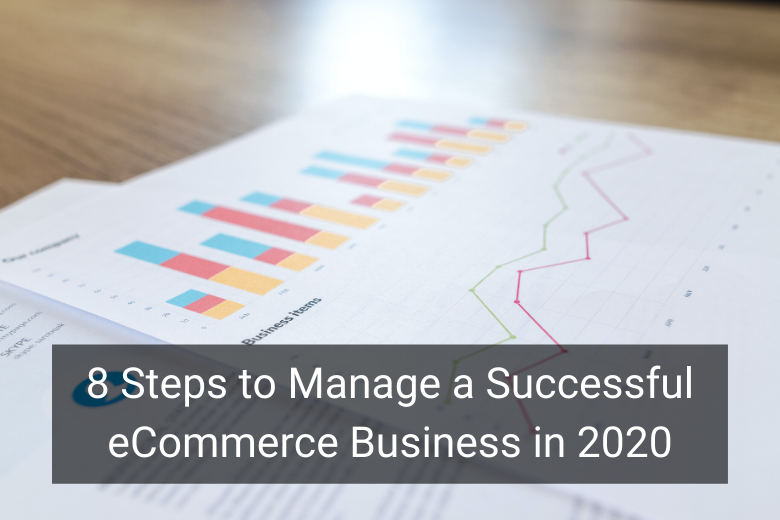Clothes, finances, food, and entertainment are among the many things that we now purchase online. It’s not surprising that this sector is growing fast. In 2019, eCommerce companies had their best holiday season yet. Online sales grew by 18 percent over 2018. In contrast, brick-and-mortar retailers closed over 9,000 doors in 2019. Still, success is never guaranteed. As the world continues down the path of digitization, eCommerce companies must adopt the latest best practices in business if they want to stay competitive. In this article we will examine steps to manage a successful eCommerce business and stay on top of your game.
eCommerce managers need to keep up with trends in many different fields, including:
1. Technology
2. Marketing
3. Products
4. Customer service
5. Shipping
6. Warehouse management
7. Inventory management
We’ve compiled a list of steps to organize, manage, and grow an eCommerce business in 2020 and beyond. While there’s no one-size-fits-all approach to success, you could gain drastically from applying some of these strategies to grow your business.
1. Experiment with emerging marketing channels
The past decade gave us the rise of the smartphone. Once a nascent technology, more than three billion people now use smartphones worldwide. To adapt, marketers have become increasingly mobile-first in their approach to campaigns.
Marketers must think through the entire customer experience, factoring in how each touchpoint enhances the customer journey. Marketers must also be adept at learning new digital platforms.
TikTok is a great example of an emerging platform that offers opportunities for online businesses. Downloads of the app increased rapidly, and it currently has more than 800 million installs. TikTok is a marketing opportunity for businesses that understand how to monetize this audience.

Source: MarketingCharts
Traditional channels like television and direct mail are also being repurposed for digital marketing. Experiment with emerging channels, and you could reach and attract customers in groundbreaking ways.
While new markets offer opportunities for connecting with a larger audience, at a cheaper cost per acquisition, a focus on new markets shouldn’t come at the expense of proven marketing channels. Facebook and Google have consistently dominated the digital ad space because marketers understand how to monetize these audiences.
2. Make your website global and local
Whether you’re targeting customers in just a few countries or all around the globe, it’s a good idea to meet them where they live. Adding a geolocator to your website is a great way to start, as it will detect the location of user IP addresses. With that information, you can set up custom pages or domains geared to customers in each territory.
Localizing your website will help personalize your business offering and can help attract new customers. This is a useful strategy when targeting US and British markets, for example, two countries that speak English but are different markets. In this situation, localization enables you to offer different payment gateways, or price your products or services in the local currency.
Localization is effective for countries where people speak the same language, for example English. However, 72% of customers are more likely to make a purchase after reading the information in their native language. Meanwhile, 55% of customers prefer to buy exclusively in their native language.
The image below provides you a sense of the size of the ecommerce market for various countries in Europe. If you happen to be a country based in the UK, it’s a table that reveals an opportunity for growth.

Source: Ecommerce News
While solutions like Google Translate make it possible to access a site in almost any language, it does not offer a perfect translation. Equally, you will not get any of the SEO benefits and traffic that you could acquire through translating your site into another language. This is part of the reason that an increasing number of sites offer a multilingual experience.
3. Offer international payments
To your customers, the currency you use is just as personal as language. Payment methods also differ between countries. If it seems inconvenient or costly to support many different payment types, think of it from the customer’s perspective. The more payment options you make available, the easier it is for them to check out. In other words: you’re more likely to sell.
Customers are likely to feel dissuaded from making a purchase if they are forced to use an unfamiliar payment gateway or process. They’re also likely to appreciate the ease of paying in their currency. Providing a variety of currency and processing options will help make your business accessible to global customers.
4. Provide international shipping
If you’re offering international sales, you’ll need to provide international shipping and returns. This means establishing a fee structure for shipping. You can choose from real-time carrier fees, charging flat fees depending on the customer’s location, or providing free shipping.
Free shipping might seem counterintuitive to your bottom line, but it’s attractive to customers. In fact, 90% of customers ranked free shipping as the top reason for shopping online more frequently. You might have to bump up the price of your products a bit to compensate, but offering free shipping can split the difference between a sale and a lost lead.
You’ll also need to establish and clearly communicate your return policy. Hassle-free returns are popular with customers, so it’s a good idea to offer this to wherever you ship products.
5. Focus on omnichannel inventory management solutions
In a brick-and-mortar environment, the exchange of goods is immediate and makes inventory management simple. The product is sold, owned by the buyer, and instantly subtracted from your inventory.
Online shopping delays this process. Technically, when a customer purchases an item online, it’s theirs. But the item is still part of your inventory and therefore tying up capital. Therefore, it is essential to set up an effective inventory management system, especially if your business uses an omnichannel retail system.
A successful inventory set-up in an eCommerce omnichannel retail environment requires the following features:
1. Regular inventory reconciliation: Failing to account for online sales may inflate your count and lead to stockouts.
2. Multiple distribution centers: Add a distribution center closer to your customers, reducing shipping costs and fulfillment times. With this system, you can also easily address stockouts by topping up with inventory from the distribution center.
3. Connected systems: To help ensure that you have just one set of numbers, warehouse and inventory management systems are essential, as are point of sale solutions.
Getting the right inventory management solution can help other parts of your business. For example, you can reduce customer support queries and complaints from an improperly managed inventory.
6. Hire remote workers
Remote working has become increasingly popular in many industries, and for a good reason. Hiring workers based remotely can not only save you on office space and resources but allows crucial parts of your business to keep ticking across time zones. Plus, it expands your talent pool for hires.
For some aspects of your business, you may not need an in-house team. With the increasing consensus that remote workers are significantly more productive than in-house teams, hiring remote workers, or making part of your business remote, is definitely something worth exploring.

Source: Flexjobs
With the significant growth in the remote workforce, managers have begun to scramble to encourage productivity within a digital work environment. For ecommerce businesses that handle remote workers, remember that technology is on your side. Utilizing technology for better transparency and communication is just one of the many ways businesses can manage remote teams and get great results.
Many job roles in the eCommerce ecosystem can be done remotely. Customer service, inventory management, and product listings are just a few areas of your business that remote teams can easily handle, so decide where it might be advantageous to expand your business and experiment with remote workers.
7. Craft a compelling content marketing strategy
As social consciousness rises among consumers, so does their loyalty to brands they see as relevant and purposeful. Smart brands will double down on communicating their brand purpose and make efforts to improve their storytelling. To do that, every brand needs compelling content.
Brands are increasingly investing in content marketing. 59% of businesses expected their content marketing budgets to increase in 2020. To win new customers over, create valuable, insightful content that builds trust and authority. Keep the sales pitch at a minimum and let your expertise do the talking.
Your content marketing should answer your audience’s questions where they’re looking for them, be it through a search engine or social media. Use data analytics tools to better segment your audience’s interests and build your content strategy from there.
8. Take the lead with performance marketing
Direct-to-consumer brands have been outspending traditional retailers. In 2019, more DTC brands (78%) increased their 2019 marketing budget than traditional retailers (60%), and DTC brands spent a larger percentage of their revenue on marketing.
However, some eCommerce companies still struggle to turn a profit. The pressure is growing for brands to achieve profitability, particularly as new competitors enter the market.
Performance marketing is a worthwhile investment for those that need a boost. Rather than paying upfront charges to online publishers, you’ll only pay per engagement (e.g. clicks, sales, etc.) with your ads and content. Publishers can track and measure nearly every action in a campaign. They are also able to provide attribution to the correct source.
As a result, brands can more accurately pinpoint how their efforts are performing and take well-informed actions to increase their success. The benefits? Higher ROI, lower risk, and lower cost per acquisition.
So, how do you go about implementing performance marketing? Partner with trusted, reliable performance marketers, tools, and agencies. Look closely at their track record, get references, and validate any results they claim to have achieved.
Second, ensure that your campaigns are compliant with all laws and regulations. Data privacy acts such as the GDPR and CCPA apply globally, so be certain that your campaigns and software providers are following the law.
By taking these steps, you’ll be better equipped to thrive in an ever-changing industry.
Author
Nick Shaw is the Chief Revenue Officer (CRO) of Brightpearl and is responsible for Global Marketing, Sales and Alliances for the leading retail inventory management software provider. He has written for sites such as Hubspot and G2. Here is Nick Shaw’s LinkedIn.

Ready To Upgrade Your Logistic Solution?
Speak to Floship ecommerce logistic consultant about improving your global support chain today




